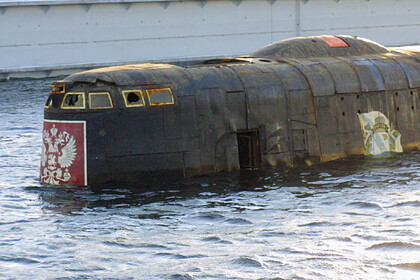The Russian submarine Kursk, wrecked in August 2000 in the Barents Sea, could not sink due to a collision with American submarines, because it was significantly larger than them. The impossibility of destroying a Russian vessel by US submarines is explained by the Polish edition of Defence24.
The publication claims that at the time of the Kursk accident (with a displacement of 23,900 tons), the American submarines Memphis (6,900 tons) and Toledo, as well as the British submarine Splendid (4,900 tons), were in the region. The publication reminds that in size and displacement, Western ships are much inferior to the Russian vessel, so their collision with the latter would lead to problems rather for the former.
Thus, Defence24 commented on the statement of the former commander of the Northern Fleet, Admiral Vyacheslav Popov, who had previously stated that the Kursk nuclear submarine had died as a result of a collision with a NATO submarine.
In November, The Drive wrote that Russia may be involved in the damage and disappearance of the underwater cables of the Lofoten-Westerolen Marine Observatory off the coast of Northern Norway, capable of tracking the movement of submarines.
In July 2019, NRK reported that the Norwegian Intelligence Service (LDC) knew about the Kursk disaster 3.5 hours before the accident was reported to the Northern Fleet of the Russian Navy. In particular, it is noted that Norwegian experts, having received data on the second explosion on the submarine, already understood that water had penetrated into it, as a result of which the submarine was at the bottom of the Barents Sea at a depth of 108 meters in a few seconds.
The Kursk sank on August 12, 2000 in the Barents Sea 175 kilometers from Severomorsk at a depth of 108 meters. According to the official version, the tragedy occurred as a result of the explosion of a torpedo on board and the further detonation of ammunition during the exercises of the Northern Fleet. All 118 crew members were killed.
Ivan Potapov

